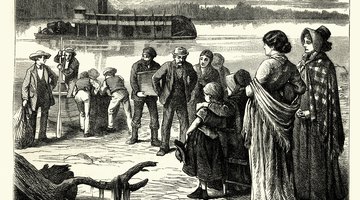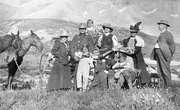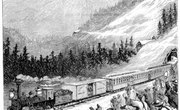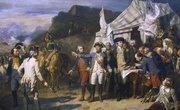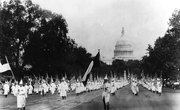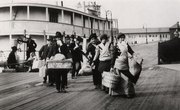The immigrants who arrived in the United States during the late 19th and early 20th centuries were very different from the predominantly Protestant, northern European immigrants who came to America in the early to mid-1800s. These immigrants were of various religions and came from Southern and Eastern Europe and China. They faced challenges in being easily accepted by those already in the states owing perceived cultural and religious differences.
Diaspora to Discrimination
By the late 1800s, Jews in Eastern Europe were becoming increasingly ostracized. "Pogroms" -- violent attacks on Jews by organized mobs -- spread from Russia to other Eastern European countries. Jews began immigrating to the U.S. in large numbers beginning in the 1880s. The swelling Jewish population alarmed many Christians, who saw Judaism as a threat to American traditions. Hotels and clubs refused Jews admittance, and universities established Jewish enrollment quotas. Industrialist Henry Ford, a popular public figure, openly expressed anti-Semitic sentiments. A notorious incident of antisemitism took place in Georgia in 1913. Leo Frank, a Jewish factory superintendent convicted -- on circumstantial evidence -- of murdering a young girl was kidnapped from his cell and lynched by a mob with connections to the Ku Klux Klan.
Centuries of Anti-Catholicism
Discrimination against Roman Catholics in the U.S. began in the Colonial era, when Catholics were few in number. However, in the 1840s, the Catholic population expanded significantly when thousands of Irish Catholics immigrated to the U.S. following Ireland's potato famine. In the late 1800s, a second flood of Catholic immigrants came from Eastern Europe and Italy. Protestants feared Catholics, coming from customs which included communal religious hierarchies, would not adapt to the individualism promoted by democracy. They also suspected Catholics of attempting to make the U.S. a papal state. Prior to World War I, there were more than 60 anti-Catholic newspapers in circulation. The American Protective Association was founded in the late 19th century to promote anti-Catholicism.
Sicilians Under Suspicion
Among the Italian immigrants arriving in the late 1900s were large numbers of young men from southern Italy who hoped to earn money for the impoverished families they left behind. Discrimination against southern Italians was rampant, however. Because many were unskilled, newspapers fostered theories that Sicilians and other southern Italians were intellectually inferior to northern Europeans. Southern Italians also were accused of having criminal tendencies. In 1891, "Sicilian gangsters" were blamed for the murder of a policeman in New Orleans, Louisiana. Nineteen Sicilians were put on trial, but were cleared owing to lack of evidence. However, a large mob broke into the local jail and lynched 11 Sicilians prisoners. It was the largest lynching in U.S. history.
Excluding the Chinese
By 1882, about 300,000 Chinese had come to the U.S. owing to widespread poverty and political chaos in China. Because the most menial jobs in America paid better wages than jobs in their homeland, Chinese laborers were willing to work for less than their European American counterparts. Additionally, contractors for the Central Pacific Railroad believed Chinese workers to be more productive and less problematic than Irish workers. Soon railroad and mine workers in the West accused the Chinese of taking away their jobs and driving down wages. Chinese immigrants became the target of mob violence and terrorist activity, beginning in the West and eventually spreading throughout the country. Under pressure from politicians, particularly in the West, to limit or end immigration of Chinese laborers, Congress passed The Chinese Exclusion Act of 1882.
Related Articles
References
- EyeWitnesstoHistory.com: Immigration in the Early 20th Century
- USHistoryScene.com: Immigrants, Cities and Disease: Immigration and Health Concerns in Late 19th Century America
- National Humanities Center: Roman Catholics and Immigration in 19th Century America; Julie Byrne
- Library of Congress: Immigration: Italians: Under Attack
- University of Washington: Center for the Study of the Pacific Northwest: Industrialization, Class and Race: Chinese and the Anti-Chinese Movement in the Late 19th Century Northwest
Resources
Writer Bio
Laura Leddy Turner began her writing career in 1976. She has worked in the newspaper industry as an illustrator, columnist, staff writer and copy editor, including with Gannett and the Asbury Park Press. Turner holds a B.A. in literature and English from Ramapo College of New Jersey, with postgraduate coursework in business law.

